Opinion & Analysis
How does the iPING putter app work?
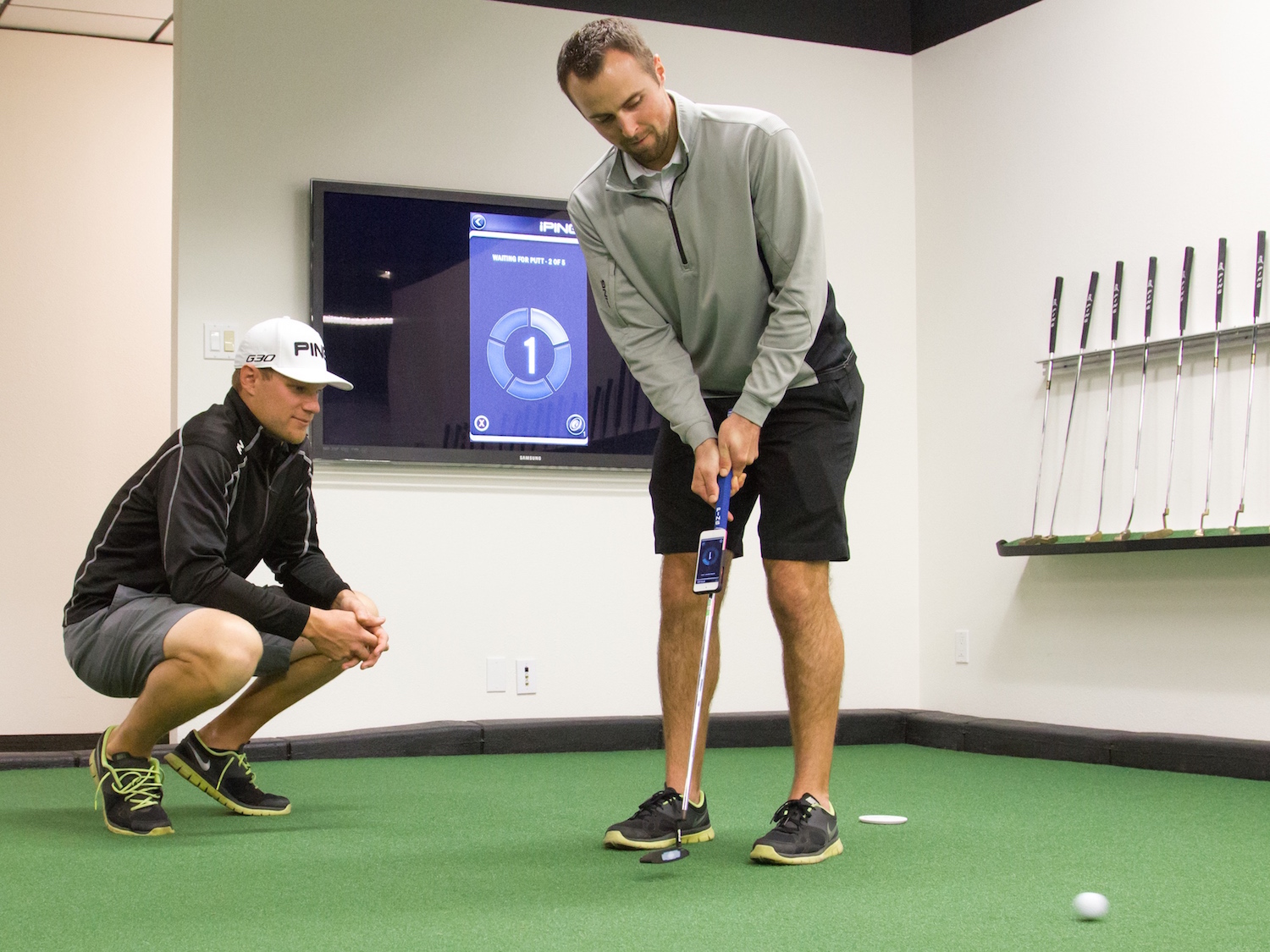
Golf is becoming more and more technological. Well, strictly speaking, the game is the same but the clubs you use and the innovations available to help analyze your swing and your ball flight are advancing fast. Here in the engineering department at Ping, we use simulation and measurement tools today that Karsten Solheim would have dreamed about. It is a great time to be a sports scientist.
iPING’s Beginnings
I remember the day in 2006 when we decided to create our own fitting software using launch-monitor data from new devices on the market such as Vector and TrackMan. I’d spent much of the previous year testing and validating a predictive ball-flight model that could take speeds, angles and spin rates and paint any golf shot into a 3D environment.
Our aim with our nFlight fitting software was to bring fitting into the 21st Century by applying real analysis to launch-monitor data and give meaningful fitting recommendations. We pioneered a few things like optimal shot bands, dispersion ellipses and gapping analysis. A couple of years later we started to talk about applying MEMS technology to measuring a club during a fitting. MEMS (Micro Electro Mechanical Systems) are small, lightweight sensors that measure movement. The devices contain two main types of sensors – three-axis gyroscopes that measure rotational movement (yaw, pitch and roll), and three-axis accelerometers that measure straight-line movement (x, y and z). These sensors are used in many different industries and can track any kind of movement, but they aren’t infallible – they drift over time and there is noise in the data. It’s not realistic to expect the sensors to keep an accurate track of the position of an object for long periods of time, but they are perfect for measuring short-duration movements.
One of our engineers had the idea to take an iPhone 4 and strap it to a putter, using the sensors in the phone itself to measure a putting stroke. I was pretty skeptical about both the sensor quality in the phone and the extra weight affecting the putting stroke, but I was happy to be proven wrong on both counts. The phone is placed close to the grip and doesn’t affect the swing weight of the putter much at all. The extra weight is easily detectible by a golfer but not distracting, even to our tour players. We also verified that the device doesn’t change the putting stroke and gives us accurate enough readings, all for the cost of a plastic cradle.
iPING reliably captures the closing angle (stroke type), impact angle, tempo, shaft lean and lie angle. It is important to note that iPING has no way to know where the hole is, which is typical for any MEMS device. As a result, you will see that many of the attributes we track are internal to the stroke, say from address to impact. We can’t tell you whether the putter face was open or closed to the target because we can’t know where the target is, however, the sensor does know which way is down by measuring gravity and this is how we measure a real shaft lean and lie angle.
Consistency is Key
So, what benefit do we get from tracking a putting stroke? Well, primarily we want to measure consistency. All our research with elite players and tour players shows that even though the motion of their putting strokes varied, the single thing they all have in common is a high degree of consistency when compared to higher-handicap players. Based on our experiments, it doesn’t seem to matter how much arc is in your stroke, if you align at the hole or consistently left or right, or if your tempo is quick or slow, so long as there is consistency in the stroke. The key was that we established a relationship between the consistency (standard deviation, the statistical term for it) of any given attribute when repeated over five putts and a player’s handicap.
Figure 1 (below) shows this relationship for closing angle. We put this together to create a score for a five-putt session in iPING that rates your consistency over five attributes against players of a certain handicap. So if your score for a session is 9.0, you putted like a typical 9-handicap player. Using this score gives players an instant understanding of what is good and bad, and allows someone to quantify whether one session is significantly better than another. For example, you can use this in practice to measure technique changes. Just try using iPING outside in the wind and then inside on a flat green to see what impact that has on your consistency.
iPING Data
When we use iPING in fitting we can take stroke type, impact angle, tempo, shaft lean, and lie angle readings to dial in the best putter for your stroke. Figure 2 shows how we would take each of the five main attributes and recommend a putter that will improve a player’s consistency. This is based on a lot of experiments in the putter lab.
There are a few things that stand out from the nearly 10 million putts registered on iPING.
- There is no such thing as Tour tempo. Tour players have an average tempo of close to 2.0 on iPING, but there are some as low as 1.4 and some over 2.5, all with good putting numbers on the tour.
- Beginner golfers often have a very flat lie angle and upwards of 10 degrees of arc in the stroke. We really don’t ever see this among elite golfers, which would suggest it is detrimental to producing good results. The average tour player has about 5 degrees of arc in his or her putting stroke (on a putt from 10 feet).
- The general public tends to add a little loft with the hands on average; elite and tour players tend to de-loft the putter a little.
- Even among the very best players, very few have the putter face totally square to the hole at address. Some good tour players consistently line up 4 or 5 degrees to one side of the hole. Since we have no evidence that it’s important to consistency, it’s not something we try to “fix.” If putts are consistently missed left or right, then a choice of alignment features and/or hang angle can help that.
The ability to acquire and analyze large sets of information from tools like iPING has certainly helped us answer some big questions about putter design and fitting, and hopefully help a few people make some more putts.
- LIKE124
- LEGIT24
- WOW12
- LOL1
- IDHT1
- FLOP4
- OB1
- SHANK6
Opinion & Analysis
The Wedge Guy: What really makes a wedge work? Part 1

Of all the clubs in our bags, wedges are almost always the simplest in construction and, therefore, the easiest to analyze what might make one work differently from another if you know what to look for.
Wedges are a lot less mysterious than drivers, of course, as the major brands are working with a lot of “pixie dust” inside these modern marvels. That’s carrying over more to irons now, with so many new models featuring internal multi-material technologies, and almost all of them having a “badge” or insert in the back to allow more complex graphics while hiding the actual distribution of mass.
But when it comes to wedges, most on the market today are still single pieces of molded steel, either cast or forged into that shape. So, if you look closely at where the mass is distributed, it’s pretty clear how that wedge is going to perform.
To start, because of their wider soles, the majority of the mass of almost any wedge is along the bottom third of the clubhead. So, the best wedge shots are always those hit between the 2nd and 5th grooves so that more mass is directly behind that impact. Elite tour professionals practice incessantly to learn to do that consistently, wearing out a spot about the size of a penny right there. If impact moves higher than that, the face is dramatically thinner, so smash factor is compromised significantly, which reduces the overall distance the ball will fly.
Every one of us, tour players included, knows that maddening shot that we feel a bit high on the face and it doesn’t go anywhere, it’s not your fault.
If your wedges show a wear pattern the size of a silver dollar, and centered above the 3rd or 4th groove, you are not getting anywhere near the same performance from shot to shot. Robot testing proves impact even two to three grooves higher in the face can cause distance loss of up to 35 to 55 feet with modern ‘tour design’ wedges.
In addition, as impact moves above the center of mass, the golf club principle of gear effect causes the ball to fly higher with less spin. Think of modern drivers for a minute. The “holy grail” of driving is high launch and low spin, and the driver engineers are pulling out all stops to get the mass as low in the clubhead as possible to optimize this combination.
Where is all the mass in your wedges? Low. So, disregarding the higher lofts, wedges “want” to launch the ball high with low spin – exactly the opposite of what good wedge play requires penetrating ball flight with high spin.
While almost all major brand wedges have begun putting a tiny bit more thickness in the top portion of the clubhead, conventional and modern ‘tour design’ wedges perform pretty much like they always have. Elite players learn to hit those crisp, spinny penetrating wedge shots by spending lots of practice time learning to consistently make contact low in the face.
So, what about grooves and face texture?
Grooves on any club can only do so much, and no one has any material advantage here. The USGA tightly defines what we manufacturers can do with grooves and face texture, and modern manufacturing techniques allow all of us to push those limits ever closer. And we all do. End of story.
Then there’s the topic of bounce and grinds, the most complex and confusing part of the wedge formula. Many top brands offer a complex array of sole configurations, all of them admittedly specialized to a particular kind of lie or turf conditions, and/or a particular divot pattern.
But if you don’t play the same turf all the time, and make the same size divot on every swing, how would you ever figure this out?
The only way is to take any wedge you are considering and play it a few rounds, hitting all the shots you face and observing the results. There’s simply no other way.
So, hopefully this will inspire a lively conversation in our comments section, and I’ll chime in to answer any questions you might have.
And next week, I’ll dive into the rest of the wedge formula. Yes, shafts, grips and specifications are essential, too.
- LIKE20
- LEGIT6
- WOW1
- LOL1
- IDHT2
- FLOP2
- OB1
- SHANK1
Golf's Perfect Imperfections
Golf’s Perfect Imperfections: Amazing Session with Performance Coach Savannah Meyer-Clement

In this week’s episode, we spent some time with performance coach Savannah Meyer-Clement who provides many useful insights that you’ll be able to implement on the golf course.
- LIKE0
- LEGIT0
- WOW0
- LOL0
- IDHT0
- FLOP0
- OB0
- SHANK0
19th Hole
Vincenzi’s 2024 RBC Heritage betting preview: Patrick Cantlay ready to get back inside winner’s circle

Just a two-hour drive from Augusta National, the PGA TOUR heads to Harbour Town Golf Links in Hilton Head Island, S.C. Hilton Head Island is a golfer’s paradise and Harbour Town is one of the most beautiful and scenic courses on the PGA TOUR.
Harbour Town Golf Links is a par-71 that measures 7,121 yards and features Bermuda grass greens. A Pete Dye design, the course is heavily tree lined and features small greens and many dog legs, protecting it from “bomb-and-gauge” type golfers.
The field is loaded this week with 69 golfers with no cut. Last year was quite possibly the best field in RBC Heritage history and the event this week is yet another designated event, meaning there is a $20 million prize pool.
Most of the big names on the PGA Tour will be in attendance this week with the exceptions of Hideki Matsuyama and Viktor Hovland. Additionally, Webb Simpson, Shane Lowry, Gary Woodland and Kevin Kisner have been granted sponsors exemptions.
Past Winners at Harbour Town
- 2023: Matt Fitzpatrick (-17)
- 2022: Jordan Spieth (-13)
- 2021: Stewart Cink (-19)
- 2020: Webb Simpson (-22)
- 2019: CT Pan (-12)
- 2018: Sotoshi Kodaira (-12)
- 2017: Wesley Bryan (-13)
- 2016: Branden Grace (-9)
- 2015: Jim Furyk (-18)
In this article and going forward, I’ll be using the Rabbit Hole by Betsperts Golf data engine to develop my custom model. If you want to build your own model or check out all of the detailed stats, you can sign up using promo code: MATTVIN for 25% off any subscription package (yearly is best value).
Key Stats For Harbour Town
Let’s take a look at key metrics for Harbour Town Golf Links to determine which golfers boast top marks in each category over their past 24 rounds.
Strokes Gained: Approach
Strokes Gained: Approach is exceedingly important this week. The greens at Harbour Town are about half the size of PGA TOUR average and feature the second-smallest greens on the tour. Typical of a Pete Dye design, golfers will pay the price for missed greens.
Total SG: Approach Over Past 24 Rounds
- Scottie Scheffler (+1.27)
- Tom Hoge (+1.27)
- Corey Conners (+1.16)
- Austin Eckroat (+0.95)
- Cameron Young (+0.93)
Good Drive %
The fairways at Harbour Town are tree lined and feature many dog legs. Bombers tend to struggle at the course because it forces layups and doesn’t allow long drivers to overpower it. Accuracy is far more important than power.
Good Drive % Over Past 24 Rounds
- Brice Garnett (88.8%)
- Shane Lowry (+87.2%)
- Akshay Bhatia (+86.0%)
- Si Woo Kim (+85.8%)
- Sepp Straka (+85.1%)
Strokes Gained: Total at Pete Dye Designs
Pete Dye specialists tend to play very well at Harbour Town. Si Woo Kim, Matt Kuchar, Jim Furyk and Webb Simpson are all Pete Dye specialists who have had great success here. It is likely we see some more specialists near the top of the leaderboard this week.
SG: TOT Pete Dye per round over past 36 rounds:
- Xander Schauffele (+2.27)
- Scottie Scheffler (+2.24)
- Ludvig Aberg (+2.11)
- Brian Harman (+1.89)
- Sungjae Im (+1.58)
4. Strokes Gained: Short Game (Bermuda)
Strokes Gained: Short Game factors in both around the green and putting. With many green-side bunkers and tricky green complexes, both statistics will be important. Past winners — such as Jim Furyk, Wes Bryan and Webb Simpson — highlight how crucial the short game skill set is around Harbour Town.
SG: SG Over Past 24 Rounds
- Jordan Spieth (+1.11)
- Taylor Moore (+1.02)
- Wyndham Clark (+0.98)
- Mackenzie Hughes (+0.86)
- Andrew Putnam (+0.83)
5. Greens in Regulation %
The recipe for success at Harbour Town Golf Links is hitting fairways and greens. Missing either will prove to be consequential — golfers must be in total control of the ball to win.
Greens in Regulation % over past 24 rounds:
- Brice Garnett (+75.0%)
- Scottie Scheffler (+69.9%)
- Corey Conners (+69.0%)
- Shane Lowry (+68.3%)
- Patrick Rodgers (+67.6%)
6. Course History
Harbour Town is a course where players who have strong past results at the course always tend to pop up.
Course History over past 24 rounds:
- Patrick Cantlay (+2.34)
- Cam Davis (+2.05)
- J.T. Poston (+1.69)
- Justin Rose (+1.68)
- Tommy Fleetwood (+1.59)
The RBC Heritage Model Rankings
Below, I’ve compiled overall model rankings using a combination of the five key statistical categories previously discussed — SG: Approach (24%), Good Drives (20%), SG: SG (14%), SG: Pete Dye (14%), GIR (14%), and Course History (14%)
- Shane Lowry
- Russell Henley
- Scottie Scheffler
- Xander Schauffele
- Corey Conners
- Wyndham Clark
- Christiaan Bezuidenhout
- Matt Fitzpatrick
- Cameron Young
- Ludvig Aberg
2024 RBC Heritage Picks
Patrick Cantlay +2000 (FanDuel)
With the exception of Scottie Scheffler, the PGA Tour has yet to have any of their star players show peak form during the 2024 season. Last week, Patrick Cantlay, who I believe is a top-5 players on the PGA Tour, took one step closer to regaining the form that’s helped him win eight events on Tour since 2017.
Cantlay limped into the Masters in poor form, but figured it out at Augusta National, finishing in a tie for 20th and ranking 17th for the week in Strokes Gained: Ball Striking. The former FedEx Cup champion will now head to one of his favorite golf courses in Harbour Town, where he’s had immaculate results over the years. In his six trips to the course, he’s only finished worse than 7th one time. The other finishes include three third places (2017, 2019, 2023) and one runner-up finish (2022). In his past 36 rounds at Harbour Town, Cantlay ranks 1st in Strokes Gained: Total per round at the course by a wide margin (+2.36).
Cantlay is winless since the 2022 BMW Championship, which is far too long for a player of his caliber. With signs pointing to the 32-year-old returning to form, a “signature event” at Harbour Town is just what he needs to get back on the winning track.
Tommy Fleetwood +3000 (FanDuel)
I truly believe Tommy Fleetwood will figure out a way to win on American soil in 2024. It’s certainly been a bugaboo for him throughout his career, but he is simply too talented to go another season without winning a PGA Tour event.
At last week’s Masters Tournament, Fleetwood made a Sunday charge and ended up finishing T3 in the event, which was his best ever finish at The Masters. For the week, the Englishman ranked 8th in the field in Strokes Gained: Approach, 10th in Strokes Gained: Ball Striking and 16th in Strokes Gained: Putting.
Harbour Town is a perfect layout for Fleetwood, and he’s had relative success at this Pete Dye design in the past. In his four trips to the course, he’s finished inside of the top 25 three times, with his best finish, T10, coming in 2022. The course is pretty short and can’t be overpowered, which gives an advantage to more accurate players such as Fleetwood. Tommy ranks 8th in the field in Good Drive % and should be able to plot his way along this golf course.
The win is coming for Tommy lad. I believe there’s a chance this treasure of a golf course may be the perfect one for him to finally break through on Tour.
Cameron Young +3300 (FanDuel)
Cameron Young had a solid Masters Tournament last week, which is exactly what I’m looking for in players who I anticipate playing well this week at the RBC Heritage. He finished in a tie for 9th, but never felt the pressure of contending in the event. For the week, Young ranked 6th in Strokes Gained: Off the Tee and 6th in Strokes Gained: Ball Striking.
Despite being one of the longest players off the tee on the PGA Tour, Young has actually played some really good golf on shorter tracks. He finished T3 at Harbour Town in 2023 and ranks 20th in the field in Good Drive% and 16th in Greens in Regulation in his past 24 rounds. He also has strong finishes at other shorter courses that can take driver out of a players hand such as Copperhead and PGA National.
Young is simply one of the best players on the PGA Tour in 2024, and I strongly believe has what it takes to win a PGA Tour event in the very near future.
Corey Conners +5500 (FanDuel)
Corey Conners has had a disappointing year thus far on the PGA Tour, but absolutely loves Harbour Town.
At last week’s Masters Tournament, the Canadian finished T30 but ranked 20th in the field in Strokes Gained: Approach. In his past 24 rounds, Conners ranks 3rd in the field in Strokes Gained: Approach, 3rd in Greens in Regulation % and 24th in Good Drive %.
In Conners’ last four trips to Harbour Town, his worst finish was T31, last season. He finished T4 in 2021, T12 in 2022 and ranks 8th in Strokes Gained: Total at the course over his past 36 rounds.
Conners hasn’t been contending, but his recent finishes have been encouraging as he has finished in the top-25 in each of his past three starts prior to The Masters, including an impressive T13 at The PLAYERS. His recent improvement in ball striking as well as his suitability for Harbour Town makes Conners a high upside bet this week.
Shane Lowry (+7500) (FanDuel)
When these odds were posted after Lowry was announced in the field, I have to admit I was pretty stunned. Despite not offering much win equity on the PGA Tour over the last handful of years, Shane Lowry is still a top caliber player who has the ability to rise to the top of a signature event.
Lowry struggled to score at The Masters last week, but he actually hit the ball really well. The Irishman ranked 1st for Strokes Gained: Approach on the week and 7th in Strokes Gained: Ball Striking. As usual, it was the putter that let him down, as he ranked 60th in the field in Strokes Gained: Putting.
Harbour Town is most definitely one of Lowry’s favorite courses on the PGA Tour. In his six starts there, he’s finished in the top 10 three times, including third twice. Lowry is sensational at Pete Dye designs and ranks 7th in Strokes Gained: Total in his past 36 rounds on Dye tracks.
Lowry is perfect for Harbour Town. In his past 24 rounds, he ranks 5th in Strokes Gained: Approach, 2nd in Good Drive% and 5th in Green in Regulation %. If he figures it out on the greens, Shane could have his first win in America since 2015.
Lucas Glover +12000 (FanDuel)
This is one of my weekly “bet the number” plays as I strongly believe the odds are just too long for a player of Glover’s caliber. The odds have been too long on Glover for a few weeks now, but this is the first event that I can get behind the veteran being able to actually contend at.
Glover is quietly playing good golf and returning to the form he had after the understandable regression after his two massive victories at the end of 2023. He finished T20 at The Masters, which was his best ever finish at Augusta National. For the week, Lucas ranked 18th for Strokes Gained: Approach and 20th in Strokes Gained: Ball Striking.
Over his past 24 rounds, Glover ranks 9th in Strokes Gained: Approach and 13th in Good Drive %. Harbour Town is a short course that the 44-year-old will be able to keep up with the top players on Tour off the tee. He’s played the course more than 20 times, with mixed results. His best finishes at Harbour Town include a T7 in 2008, but recently has a finish of T21 in 2020.
Glover has proven he can contend with the stars of the Tour on any given week, and this number is flat out disrespectful.
- LIKE30
- LEGIT5
- WOW2
- LOL1
- IDHT1
- FLOP2
- OB0
- SHANK2
-

 19th Hole1 week ago
19th Hole1 week agoDave Portnoy places monstrous outright bet for the 2024 Masters
-

 19th Hole3 weeks ago
19th Hole3 weeks agoThings got heated at the Houston Open between Tony Finau and Alejandro Tosti. Here’s why
-

 19th Hole1 week ago
19th Hole1 week agoTiger Woods arrives at 2024 Masters equipped with a putter that may surprise you
-

 19th Hole2 weeks ago
19th Hole2 weeks agoReport: Tiger Woods has ‘eliminated sex’ in preparation for the 2024 Masters
-

 19th Hole5 days ago
19th Hole5 days agoTwo star names reportedly blanked Jon Rahm all week at the Masters
-

 19th Hole4 days ago
19th Hole4 days agoNeal Shipley presser ends in awkward fashion after reporter claims Tiger handed him note on 8th fairway
-

 19th Hole3 days ago
19th Hole3 days agoReport: LIV Golf identifies latest star name they hope to sign to breakaway tour
-

 19th Hole2 weeks ago
19th Hole2 weeks agoAddiction, spinal fusion, and scam artists – Everything Anthony Kim revealed in candid interview with David Feherty

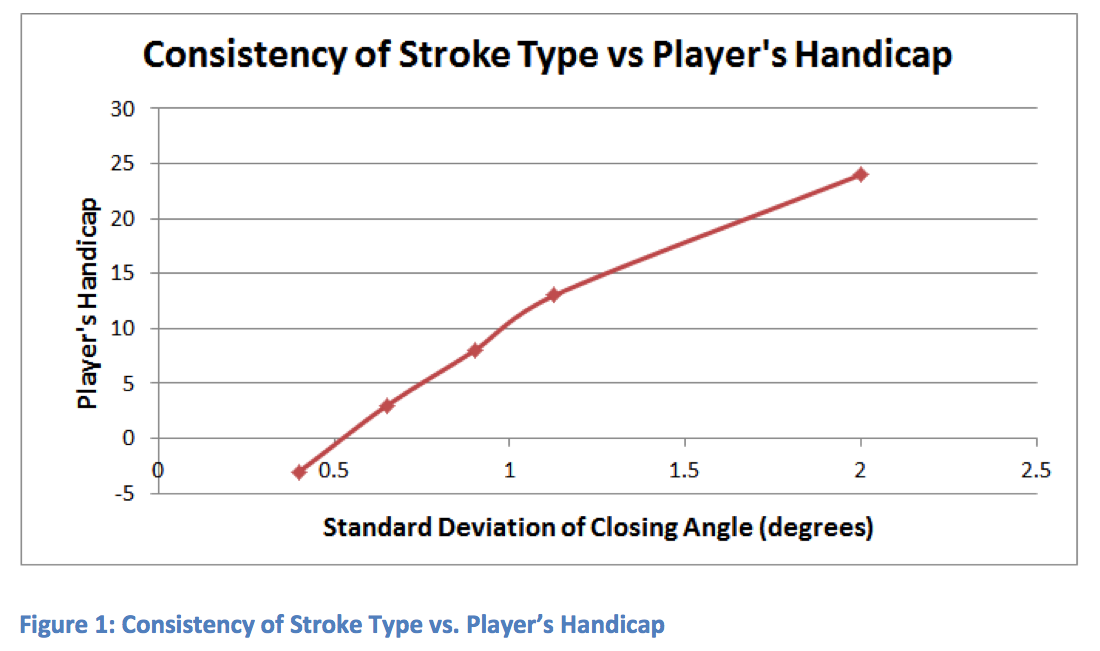
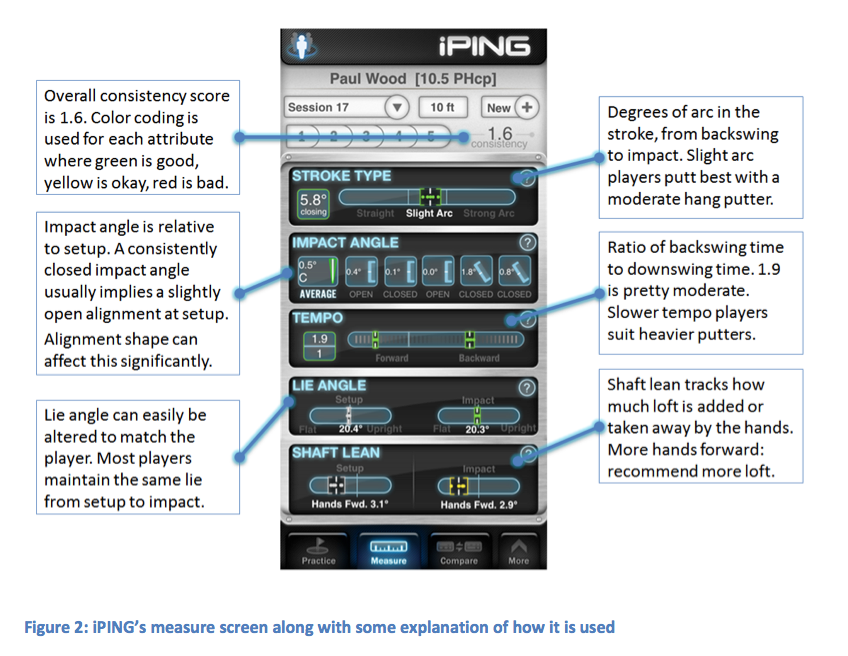




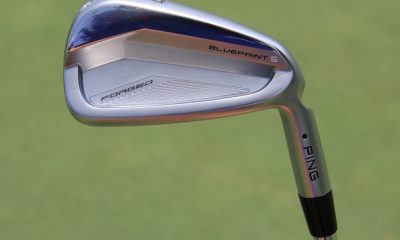

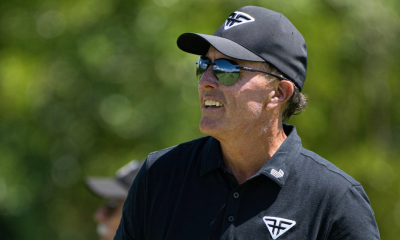



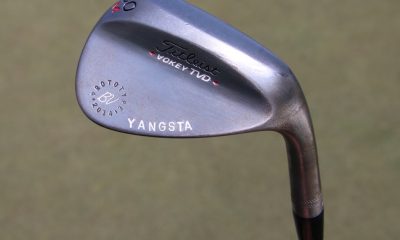

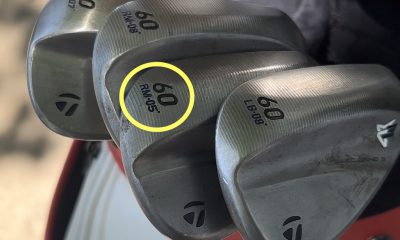













Anna Simon
Nov 4, 2015 at 5:10 pm
Hi Paul,
I am currently working with a company that is building a new product that helps golfers improve and analyze their golf swing, taking a multi-sensor approach to the swing analyzers products on the market. The product’s Kickstarter will be launching later this month. Would you like us to get in touch with you to test the product? If so, please send me your email to [email protected].
Many Thanks,
Anna Simon
Ian Jones
Feb 10, 2015 at 8:23 pm
Yes – bought it for the galaxy S3 (even got the S3 because Ping did this alleged great app)….. AND….of course it didnt work. very disappointed. Surprisingly Ping customer service didnt seem to want to know when I called. Was there a recall since it didnt work ? Now have a $30 piece of plastic sat in a box, keeping company with old yardage books.
killerbgolfer
Feb 8, 2015 at 10:27 pm
Love what you do PING. Consistently the most progressive company with outstanding products and service.
Mike
Feb 7, 2015 at 3:05 pm
Do Ping have plans to release an iPhone 6 cradle? I’m lost without one.
Rene Realme
Feb 6, 2015 at 4:27 pm
Galaxy S4 cradle please!
Mark
Feb 6, 2015 at 3:27 pm
So any thoughts on providing this app for Android users who are 50% of the smartphone market??????
Paul Wood
Feb 6, 2015 at 6:50 pm
Unfortunately, the android platform makes this really tough. There’s so much variation in phones and sensors. We looked at it seriously and even briefly released a version for the Galaxy S3 but even just that 1 model had something like 10 different hardware versions, so it made it almost impossible to ensure functionality and accuracy. Maybe we’ll have to look at something where we use a MEMS device instead of the phone to link up to iPing as a solution for Android users. We’ll keep looking!
Mike Olsen
Feb 6, 2015 at 12:53 pm
Paul,
Just curious as to how the iPing data stands up to the SAM Puttlab output…both in terms of accuracy and consistency of the data? Thanks
Paul Wood
Feb 6, 2015 at 6:54 pm
We have a SAM Puttlab in our lab and we used both the SAM and high speed video data to check the accuracy and consistency of our data. I myself was surprised how good the phone’s sensors did in our testing. Clearly there are quite a few aspects of the putt that the SAM measures that we don’t but the SAM is quite a big investment for someone.
John Grossi
Feb 6, 2015 at 5:42 am
Paul, Thanks for this explanation on Ping’s putter app. However, I am interested in Ping’s NFlight(sp) device. Would you consider an article on it? These MEMS devices are very interesting on how they relate to the golf swing.
Paul Wood
Feb 6, 2015 at 11:00 am
I’d certainly be very happy to do an article on nFlight. I might try to cover a couple of other topics relating to club technology or golf physics first but I’ll try to come back to fitting tools again. I’m really interested in MEMS technology personally – it would be a pleasure to write more on the subject.
mike
Feb 5, 2015 at 5:16 pm
Great product. It is very consistent and helped me to slow down my putts.
Golfraven
Feb 5, 2015 at 2:40 pm
The cradle still fits the iphone 5 but I am not sure I tested it never iphone 6 model. reminds me to take it out of my golf bag locker and use it again. Saddly the app is lacking better stats analysis and is not showing dates when you did the putting therefor difficult to compare unless you write dates in your notepad. i agree that putting with the phone does not affect the stroke itself but I feel the weight of it and also the impact sound is slighly different. however it is great tool which provides important data on stroke type, tempo, shaft lean, lie angle etc.. I would say biggest feedback is weather your stroke is consistent, independent of how you roll the ball. I am close to +PHcp and it helps me to focus when practicing. All pros are around +4 and comparing against those is good indication what your putting is lacking. So as with anything in golf, consistency is key
MS
Feb 5, 2015 at 4:38 pm
Golfraven – On the “Measure” screen, you can change the name of each session. Look at the picture above where it says “Session 17” – if you tape on the name (not the drop down arrow), it will bring up the keyboard and you can change the session to a date or whatever you would to call it.
The best way to utilize this is on a day when you are putting well. Take a quick session and save it by date, “good putting day”, etc so you know where to find it. Then you will have it stored what your stats are when you are rolling it well. Helps you go back and compare when you have an off day and can help figure out why.
Golfraven
Feb 5, 2015 at 5:48 pm
Thanks for the hint, much appreciated. been using this now for last 2-3 years and never figured it out.
bph
Feb 5, 2015 at 1:41 pm
How does it work? The answer is it doesn’t. Be careful before buying this. The app has been broken for at least a year (on iPhone at least), leaving me with a useless $30 piece of plastic.
MS
Feb 5, 2015 at 4:39 pm
Have you tried deleting the app and reinstalling?
Paul Wood
Feb 5, 2015 at 6:29 pm
I’m really sorry to hear your app is not working correctly. Our application support would be happy to help you get that figured out. Their number is 855-687-5700 or [email protected] We do our best to make sure it works for as many people as possible, but I’m not going to lie, making apps is hard when hardware and software are progressing at such a fast pace.
Ed
Feb 5, 2015 at 1:08 pm
I have one for my iphone4, which i don’t have anymore..
Will ping discount if i get one for iphone 5 or 6?
Double Mocha Man
Feb 5, 2015 at 1:05 pm
The app works great. But finding a cradle that fits my phone is problematic. So I’ve used duct tape in the past. One more use for duct tape…
Tom Stickney
Feb 5, 2015 at 10:29 am
It’s a great tool for sure.